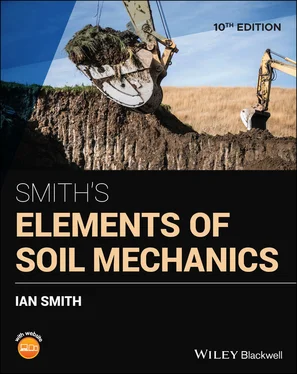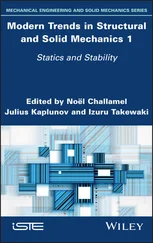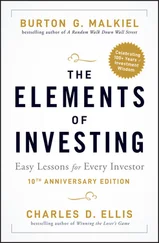658 659
659 660
660 661
661 662
662 663
663 664
664 665
665 666
666 667
667 668
668 669
669 670
670 671
671 672
672 673
673 674
674 675
675 676
676 677
Smith's Elements of Soil Mechanics
10TH EDITION
Ian Smith

This tenth edition first published 2021
© 2021 John Wiley & Sons Ltd
Edition History © 2014 by John Wiley & Sons, Ltd © 2006 Ian Smith
All rights reserved. No part of this publication may be reproduced, stored in a retrieval system, or transmitted, in any form or by any means, electronic, mechanical, photocopying, recording or otherwise, except as permitted by law. Advice on how to obtain permission to reuse material from this title is available at http://www.wiley.com/go/permissions.
The right of Ian Smith to be identified as the author of this work has been asserted in accordance with law.
Registered Offices John Wiley & Sons, Inc., 111 River Street, Hoboken, NJ 07030, USA John Wiley & Sons Ltd, The Atrium, Southern Gate, Chichester, West Sussex, PO19 8SQ, UK
Editorial Office 9600 Garsington Road, Oxford, OX4 2DQ, UK
For details of our global editorial offices, customer services, and more information about Wiley products, visit us at www.wiley.com.
Wiley also publishes its books in a variety of electronic formats and by print‐on‐demand. Some content that appears in standard print versions of this book may not be available in other formats.
Limit of Liability/Disclaimer of Warranty In view of ongoing research, equipment modifications, changes in governmental regulations, and the constant flow of information relating to the use of experimental reagents, equipment, and devices, the reader is urged to review and evaluate the information provided in the package insert or instructions for each chemical, piece of equipment, reagent, or device for, among other things, any changes in the instructions or indication of usage and for added warnings and precautions. While the publisher and author have used their best efforts in preparing this work, they make no representations or warranties with respect to the accuracy or completeness of the contents of this work and specifically disclaim all warranties, including without limitation any implied warranties of merchantability or fitness fora particular purpose. No warranty may be created or extended by sales representatives, written sales materials or promotional statements for this work. The fact that an organization, website, or product is referred to in this work as a citation and/or potential source of further information does not mean that the publisher and author endorse the information or services the organization, website, or product may provide or recommendations it may make. This work is sold with the understanding that the publisher is not engaged in rendering professional services. The advice and strategies contained herein may not be suitable for your situation. You should consult with a specialist where appropriate. Further, readers should be aware that websites listed in this work may have changed or disappeared between when this work was written and when it is read. Neither the publisher nor author shall be liable for any loss of profit or any other commercial damages, including but not limited to special, incidental, consequential, or other damages.
Library of Congress Cataloging-in-Publication Data
Names: Smith, G. N. (Geoffrey Nesbitt), author.
Title: Smith's elements of soil mechanics / Ian Smith.
Other titles: Elements of soil mechanics for civil and mining engineers | Elements of soil mechanics
Description: 10th edition. | Hoboken, NJ, USA : Wiley-Blackwell, 2021. | Originally published under the title: Elements of soil mechanics for civil and mining engineers. | Includes bibliographical references and index.
Identifiers: LCCN 2021003404 (print) | LCCN 2021003405 (ebook) | ISBN 9781119750390 (paperback) | ISBN 9781119750406 (adobe pdf) | ISBN 9781119750413 (epub)
Subjects: LCSH: Soil mechanics.
Classification: LCC TA710 .S557 2021 (print) | LCC TA710 (ebook) | DDC 624.1/5136–dc23
LC record available at https://lccn.loc.gov/2021003404
LC ebook record available at https://lccn.loc.gov/2021003405
Cover Design: Wiley
Cover Image: © Monty Rakusen/Getty Images
When the ninth Edition of this book was published in 2014, I was pleased to receive positive feedback for making the understanding of the new geotechnical design code, Eurocode 7, straightforward and easy to follow. At that same time, a review of all Eurocodes commenced with the intention of producing a ‘second generation’ of the codes containing improvements and changes to the design procedures. The second generation of the Eurocodes will be published throughout the 2020s and Eurocode 7, in particular, is set to be significantly different from the first generation of the code.
The changes in the new Eurocode 7 affect many aspects of the existing design procedure, and I describe these and explain how to perform the new geotechnical design process in this tenth edition of the book. Many new worked examples help to illustrate the new procedures. Since the first generation of Eurocode 7 is still very much in use in geotechnical design, I have retained the content on it so that readers of this book can gain a thorough understanding of the design procedures used in both generations of the code.
As with the ninth edition, to help the reader fully understand the stages of a Eurocode 7 design, I have arranged the sequence of chapters in the book appropriately: Chapter 6describes the design methods (aligning mainly to Eurocode 7 Part 1) and Chapter 7describes the ground investigation aspects (aligning to Part 2). The new Part 3of the second generation of the code is then introduced in the appropriate later chapters in the book (e.g. retaining structures, shallow and deep foundations).
In recognition of the growing coverage of geomechanical modelling in university degrees, I have introduced a brand‐new chapter on constitutive modelling in geomechanics ( Chapter 16). The content of this chapter was provided by my friend and colleague Dr Rodaina Aboul Hosn from the École Spéciale des Travaux Publics , Paris. What Rodaina does not know about constitutive modelling is not worth knowing, and I owe her an immense amount of thanks for her excellent work. I have embedded Rodaina's work into my style of writing so that the chapter sits neatly alongside all the other chapters.
In addition to the above new content, I have also updated all sections on laboratory and field testing to align the descriptions of the procedures with the new international standards for these tests ( Chapters 1, 4and 7). Another update introduced in this edition is highway pavement foundation design ( Chapter 15) – brought about as a result of revisions to the UK Design Manual for Roads and Bridges (DMRB). The early chapters of the book continue to cover the fundamentals of the behaviour of soils. To ease understanding of critical state soil mechanics, I have rearranged and expanded this subject and this is now in a new chapter alongside description of stress paths ( Chapter 5).
As with previous editions, I have provided many worked examples throughout the book that illustrate the principles of soil mechanics and the geotechnical design processes. To help the reader further, I have produced a suite of spreadsheets and documents to accompany the book that match up against many of the worked examples. These can be used to better understand the analysis being adopted in the examples. In addition, I have produced the solutions to the exercises at the end of the chapters, a suite of video animations of lab tests and geotechnical processes, and various other teaching resources to accompany the book. All of these files can be freely downloaded from the companion website.
Читать дальше













